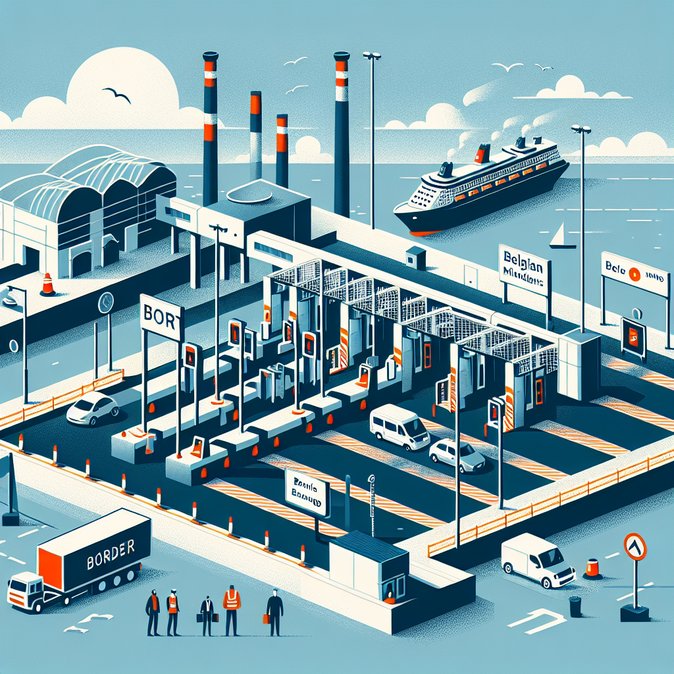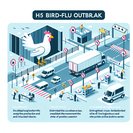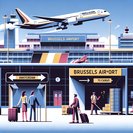
Belgian companies that routinely send staff across the Channel for short assignments—or rely on van deliveries to the United Kingdom—received a welcome surprise on 1 November 2025: the Port of Dover quietly delayed the start of the European Union’s new Entry/Exit System (EES) for tourist cars.
The EES, already live for coach and freight traffic since 12 October, will eventually require all non-EU travellers—including Belgians returning from the UK—to register four fingerprints and a facial image the first time they cross an external Schengen border. Car passengers were supposed to join the system from 1 November, but Dover’s management said implementation would wait for a green-light from the French border police who operate the outbound passport booths.
For Belgian road travellers, the pause removes an immediate bottleneck at the start of the autumn school-holiday return rush. Modelling by the port suggested each car could take up to six times longer to process once full EES capture begins; Belgian tour operators had already warned clients to expect tailbacks stretching onto the E40 in Flanders.
![Port of Dover postpones EU biometric border checks for cars, giving Belgian holiday-makers breathing room]()
Corporate mobility managers should not be lulled into complacency, however. Dover confirmed that its 100 new registration kiosks and re-modelled lanes are “ready to switch on at short notice”, and Eurotunnel still plans to extend EES to cars before Christmas. Businesses are therefore advised to brief employees on the biometric requirements (all fingers clean and uncovered), build extra dwell-time into itineraries, and remind frequent cross-Channel drivers that once they have completed their first EES enrolment, later crossings should revert to a quick face-scan.
Looking further ahead, the deferral compresses the learning curve before the Easter and summer 2026 peaks, when foot passenger and car flows will surge. If French approval comes mid-winter, the first real stress-test may coincide with February’s ski-getaway traffic—another period when Belgian licence plates are common on Kent’s roads. Multinationals moving equipment or personnel will want contingency plans, ranging from alternative ferry routes to air and rail options via Brussels-Midi and London St Pancras, where EES desks are already in pilot use for business-class Eurostar travellers.
In the meantime, Belgian motorists can enjoy a brief reprieve. But when the biometric switch is finally flipped, anyone who has not practised the new routine could find the North Sea crossing takes much longer than the drive through Flanders.
The EES, already live for coach and freight traffic since 12 October, will eventually require all non-EU travellers—including Belgians returning from the UK—to register four fingerprints and a facial image the first time they cross an external Schengen border. Car passengers were supposed to join the system from 1 November, but Dover’s management said implementation would wait for a green-light from the French border police who operate the outbound passport booths.
For Belgian road travellers, the pause removes an immediate bottleneck at the start of the autumn school-holiday return rush. Modelling by the port suggested each car could take up to six times longer to process once full EES capture begins; Belgian tour operators had already warned clients to expect tailbacks stretching onto the E40 in Flanders.

Corporate mobility managers should not be lulled into complacency, however. Dover confirmed that its 100 new registration kiosks and re-modelled lanes are “ready to switch on at short notice”, and Eurotunnel still plans to extend EES to cars before Christmas. Businesses are therefore advised to brief employees on the biometric requirements (all fingers clean and uncovered), build extra dwell-time into itineraries, and remind frequent cross-Channel drivers that once they have completed their first EES enrolment, later crossings should revert to a quick face-scan.
Looking further ahead, the deferral compresses the learning curve before the Easter and summer 2026 peaks, when foot passenger and car flows will surge. If French approval comes mid-winter, the first real stress-test may coincide with February’s ski-getaway traffic—another period when Belgian licence plates are common on Kent’s roads. Multinationals moving equipment or personnel will want contingency plans, ranging from alternative ferry routes to air and rail options via Brussels-Midi and London St Pancras, where EES desks are already in pilot use for business-class Eurostar travellers.
In the meantime, Belgian motorists can enjoy a brief reprieve. But when the biometric switch is finally flipped, anyone who has not practised the new routine could find the North Sea crossing takes much longer than the drive through Flanders.












